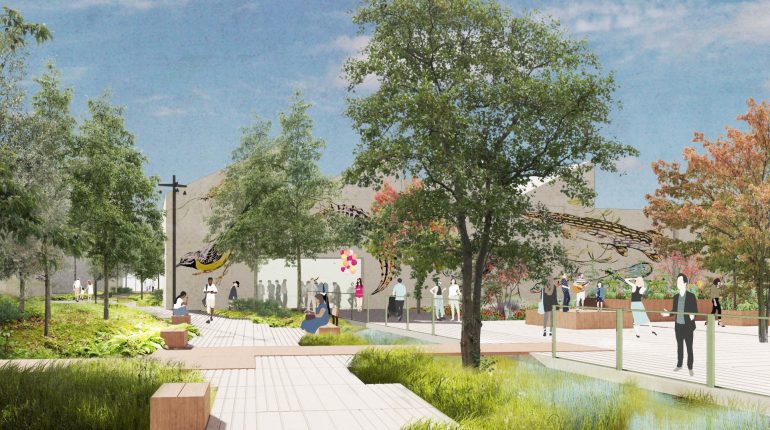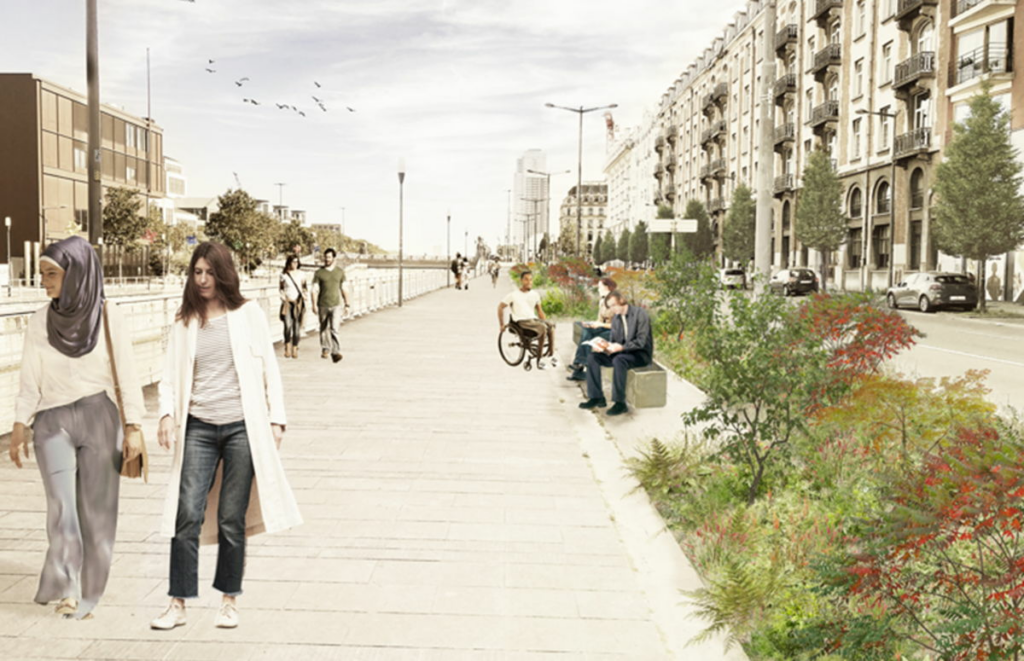In recent years, Brussels has become a greener city, however, these natural spaces and plants are not evenly distributed across the region. A large joint project aims to change this, specifically around the concrete-heavy Canal area.
Due to its multitude of parks, the Sonian Forest and the numerous trees, bushes and plants along its streets and in squares, Brussels is increasingly seen as a green city. But some neighbourhoods enjoy a much larger share of the total 4,000 hectares of green space, while others are becoming grey "heat islands", such as the Canal zone, the largest "concreted" surface area in the region.
During heat waves, the temperature difference between the most densely built-up areas and the greener, less densely built-up parts of the city can reach 8°C, Overall, inhabitants here are more exposed to health problems than those in the greener neighbourhoods, as trees purify the air, produce oxygen, absorb CO² and, in summer, provide shade and have a cooling effect.
To tackle this discrepancy and further cool the city, a large-scale planting strategy is being adopted in the areas surrounding the Canal.
"We want to offer every inhabitant of Brussels a corner of nature within easy reach," said Elke Van den Brandt, Brussels Minister for Mobility and Public Works. "This is an essential catch-up measure that is just the beginning of a greener Brussels."
Short-term efforts
As part of the joint effort by Brussels Mobility, Brussels Environment and the Port of Brussels, more than 14,000 trees and shrubs will be planted around the Canal zone between now and 2027.
Many of the projects that will make the area have already been announced in the past months, but they will likely not be finished soon.
However, a number of smaller projects will also be realised this winter, more specifically in the least green neighbourhoods, Brussels Mobility noted, in anticipation of some larger projects planned in the medium term.

Most sections of the canal are currently concrete-heavy. Credit: Belga/ Nils Quintellier
On Avenue de Vilvorde, to the north of Evere, 5,000 new trees and shrubs, accounting for 25,000 m² of ecological management, will be planted on the central reservation, making it an important link in the ecological network.
Meanwhile, on Boulevard du Neuvième de Ligne, the most central stretch of the Canal in Brussels, 801 m² of ground will be revegetated with new plants, while benches will be put down for passers-by. Around the Loredana Marchi bridge, at the MIMA, and at the Pont des Hospices, among others, plants will be added more locally.
Finally, at Porte de Ninove, 1,359 m² of concrete have been softened, while a small park is being constructed next to the bridge on De Trooz Square.
Green network
Aside from making the capital more resilient against climate change, the importance of creating more green spaces in neighbourhoods where they are lacking is also especially pertinent due to Brussels' urban and densely built character.
"Many Brussels residents do not have a garden, and they too have the right to a place where they can recharge their batteries, meet people and find coolness in summer," said Alain Maron, Brussels Environment Minister.
This summer, the first part of the park at the Quai des Matériaux park was opened. Once finalised, this 2.8-hectare park – the equivalent of 3 football pitches – will stretch from Sainctelette to Place des Armateurs.

Parc de la Sennette. Credit: Bouwmeester
A little further on, Maximilian Park will be renovated as part of a project that is planned for 2025 and will also expose part of the Zenne.
Brussels Environment is also working on Parc de la Sennette to turn the linear park in the densely populated zone between the Anderlecht Abattoir and the Porte de Ninove into an "island of freshness" by adding more greenery.
Finally, within the Canal, the Port of Brussels has installed vegetated rafts. "Above water, they are planted, which is interesting for insects, below are Biohut underwater cages that provide valuable shelter and increase the chances of survival for young fish," Director-General Gert Van der Eeken, said.
"The floating rafts contribute to the biodiversity of the canal by creating a new habitat for fish, amphibians, birds, insects and plants." It has also installed nesting boxes on the canal banks to attract bank swallows, as they disappeared from Brussels some 40 years ago. The first swallows returned in 2021 and 35 breeding pairs were already counted in June this year.

